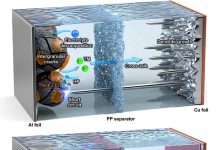
Scientists from Queensland University of Technology (QUT) have made a small but powerful discovery that could help turn wasted heat into clean electricity.
By adding a tiny amount of manganese to a special material, they created one of the most efficient thermoelectric materials ever reported.
Their work, published in Energy & Environmental Science, shows how small changes in chemistry can lead to big advances in sustainable energy.
Thermoelectric materials are special substances that can convert heat directly into electricity.
They work by taking advantage of temperature differences—such as between a hot car engine and the cooler air around it—to generate electric power.
While the concept has been known for decades, most thermoelectric materials aren’t efficient enough to make a real impact on energy production.
The QUT research team, led by Professor Zhi-Gang Chen and Dr. Xiao-Lei Shi from the School of Chemistry and Physics, found a way to change that.
Their team modified silver copper telluride, a material already known for good thermoelectric properties, by adding a small amount of manganese. This minor adjustment produced a dramatic improvement in performance.
“When we added manganese, the material reached record efficiency levels for its type,” said first author Nan-Hai Li.
“In a prototype device, it achieved more than 13 percent conversion efficiency, which means it could turn about 13 out of every 100 units of heat energy into electricity.”
That might not sound like much, but in the world of thermoelectrics, it’s a breakthrough. Most similar materials can only convert a few percent of heat energy into power. This record performance puts the new compound on par with the best existing technologies.
Professor Chen explained that the discovery could open doors to new clean energy solutions. “Every day, enormous amounts of heat from cars, factories, and power stations just escape into the air,” he said.
“This material offers a way to capture some of that wasted energy and transform it into useful, carbon-free electricity.”
Another advantage of the new material is its safety and simplicity. Associate Professor Shi noted that, unlike many high-performing thermoelectric compounds, this one doesn’t rely on toxic or rare elements. “It’s stable, environmentally friendly, and easy to produce,” she said. “That makes it a strong candidate for real-world applications.”
With further research and development, this discovery could help power a future where the heat we waste today becomes a clean and valuable source of energy.



